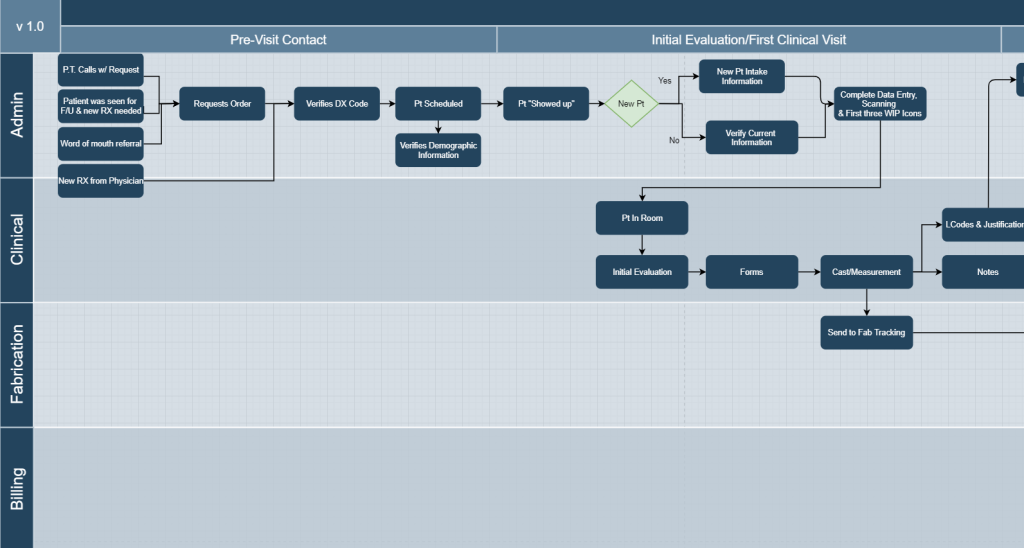By now, many of you have likely been working from home or at least partially for several weeks. Hopefully, you’ve settled into your new norm and have figured out how to optimize that work-from-home experience for productivity. With the growing pains of transitioning to a remote position, you might also experience frustration with your patient care workflow. Now is a great time to sit with your staff and define a new best practice workflow for your clinic.
What we are experiencing now is a shift in how we treat our patients. Everything from how we see our patients to how their treatment plan is formulated has changed. Additionally, we are having to engage with our internal teams in an entirely new way. Change has been thrust upon many of you professionally, in the midst of personally navigating a pandemic. This is not easy. However, now is when to take advantage of your time. Focusing on process improvements and modernizing your approach to patient care can position your business to emerge stronger.
With any new issues that may arise while working remotely (and through a pandemic) it may be useful to begin to define the problem by asking your team these questions:
- What is working well for us?
- What is not working well for us?
- What are our patients saying?
- How could a modification in our workflow impact our collections?
With any project, think with the end in mind. Right now, you need to revisit your workflow to ensure it is serving your patients well for the environment we are currently experiencing. However, will the new workflow be the norm six months from now? That answer is going to be different for every clinic. Your vision may be to completely transform your way of doing business or it might be to get back to business as usual as soon as possible. Either way, the team needs to know the future vision so they can best help the business get there.
Where to Start
At the very beginning. Don’t overlook how a patient is referred to you. Even with disruption in our current system, referrals are still a standard. From my experience there are four main ways your practice might receive referral:
- New prescription from their Physician
- Follow-up appointment with your office turns into a recommendation for a new prescription
- Word of mouth – a friend refers the to your facility
- Referral from other medical professionals (PT, OT, PA etc.)
From there you want to keep moving through each step. It is helpful to have everyone on your team involved in defining your ideal workflow. For example, while billers are not typically involved in the initial stages of the patient care workflow – everything that is done during this time has a direct impact on their role. Same for fabrication. You may find out that the current way fabrication is initiated causes the technicians 30 minutes of research before they can begin their job.

Once you have mapped out your patient care workflow from Pre-Visit Contact to Delivery, you should document who performs each task. This will help everyone to have complete clarity on their roles and how their role impacts the next person in the workflow. This is also where we bake in accountability; roles and tasks are visible to and for everyone.
Lastly, what are the various programs or tools being used to support your workflow? Everyone should document what tools they are using and for what task. How much replication or duplication is occurring? How can your team simplify this?
Working on patient care workflow can save owners and team members from spending countless hours in communication mishaps and fighting billing errors. Additionally, having a seamless workflow creates a fluid patient experience. By completing this effort, your team has a clear direction on their roles and responsibilities; allowing business owners the ability to focus on business development – even during uncertain times.
Jessica Norrell, CPO, MBA | Contact us Today!
Originally published for the SPS Xpress
Be the first to comment